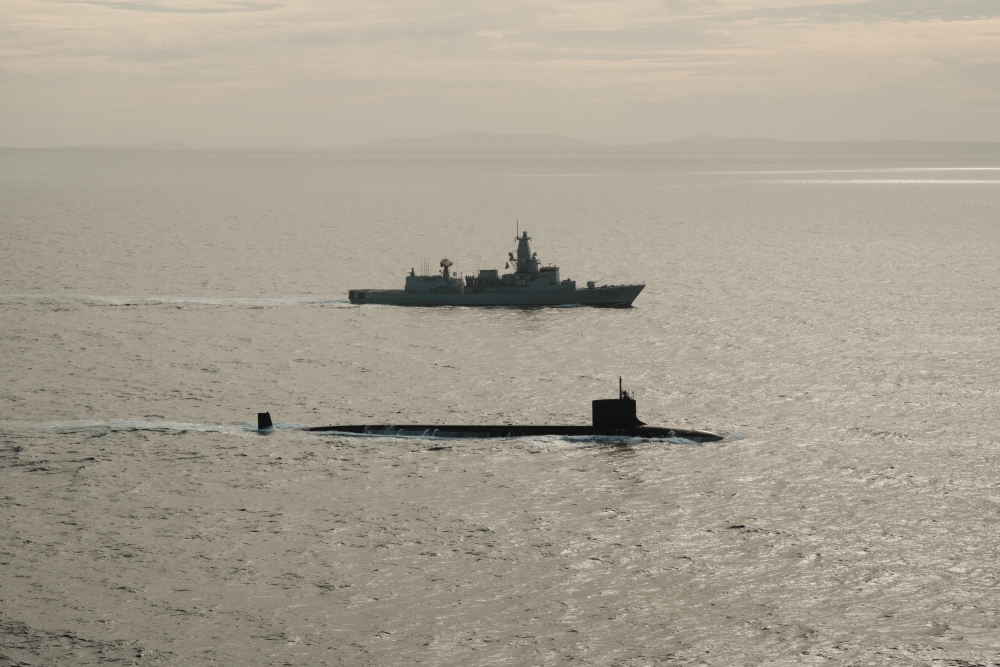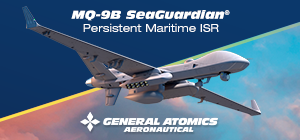
The US Navy (USN) has deployed a nuclear-powered attack submarine (SSN) to the Portuguese Navy/NATO co-hosted ‘REPMUS’ exercise for the first time. The boat – THE VIRGINIA-class submarine USS NEW MEXICO – contributed to the exercise’s development of new maritime unmanned system (MUS) concepts and capabilities.
‘REPMUS’ (or ‘Robotic Experimentation and Prototyping with Maritime Unmanned Systems’) – is an annual exercise taking place each September at Troia, southern Portugal. Developed originally by the Portuguese Navy and now produced in partnership with NATO, it is perhaps the pre-eminent pan-alliance exercise for MUS operational experimentation (OPEX).
This year, as in alternate years, ‘REPMUS’ took place in tandem with NATO Allied Maritime Command’s (MARCOM’s) own dedicated MUS exercise, ‘Dynamic Messenger’. Together, the two exercises were run across four weeks in September.
NEW MEXICO’s presence in Portugal was a significant development in the exercise.
“The force layout includes for the first time a US nuclear submarine,” Captain Palmeiro Ribeiro, director of the Portuguese Navy’s Centre for Naval Operational Experimentation (Centro de Experimentação Operacional da Marinha: CEOM), and exercise controller for ‘REPMUS’, told a media briefing at the exercise on 22 September.
Within OPEX and wider training activities, NEW MEXICO participated in a two-day anti-submarine warfare (ASW) serial, working with the Portuguese Navy TYPE 209PN diesel-electric submarine (SSK) NRP TRIDENTE. In a statement released on 16 September, MARCOM said the activities “[enhanced] the ability of the navies to conduct allied submarine operations, while testing the integration of unmanned systems”. The statement added that the ASW serial brought particular focus on interoperability.
Captain Valter de Bulha Almeida, Commanding Officer of Commander Task Group (CTG) 443.90 during ‘REPMUS’, and director of the Portuguese Navy’s tactical operations training and evaluation centre (Centro Integrado de Tática e Análise Naval: CITAN) underlined the importance of the ASW serial in the exercise. “It enabled us to conduct submarine against submarine, a Portuguese submarine against another submarine, and we can employ maritime patrol aircraft,” he told the media briefing. The serial included two Portuguese Navy surface ships: the M-class frigate NRP D. FRANCISCO DE ALMEIDA and the VIANA DO CASTELO-class offshore patrol vessel NRP SETUBAL.
As regards contributing to wider MUS capability development, NEW MEXICO conducted an OPEX activity that involved deploying a submarine-launched unmanned aerial system (UAS), the MARCOM statement said. Underlining the importance of the high-level OPEX framework that ‘REPMUS’ and ‘Dynamic Messenger’ bring, the statement added that “Operations with UASs provided a unique opportunity for NEW MEXICO to conduct real-world OPEX activities in a complex and challenging maritime environment.”
“This training and the OPEX embody innovation and demonstrate how allies can integrate submarines with unmanned platforms to achieve operational advantage,” said Rear Admiral Bret Grabbe, Commander, Submarines NATO (COMSUBNATO), in the MARCOM statement. “This level of co-operation enhances interoperability and paves the way for future operations where traditional and emerging technologies must operate seamlessly in high-threat, multi-domain theatres.”
The activities NEW MEXICO conducted and the serials it supported demonstrated the potential role of USN SSNs in supporting MUS use across domains, from the air to the seabed. “Our commitment to ‘REPMUS’/‘Dynamic Messenger’ highlights the shared imperative for the US and our NATO partners to defend the seabed,” Vice Admiral Robert Gaucher, Commander US Submarine Force and Allied Submarine Command, said in the MARCOM statement. “By demonstrating interoperability between our platforms, people, and robotic autonomous systems, we build the capability and capacity to share the burden of defending our critical undersea infrastructure.”
In previous national trials, NEW MEXICO has contributed to the USN’s development of UUV capability, including for seabed operations. For example, in activities conducted at the British Underwater Test and Evaluation Centre (BUTEC) range off Scotland, UK, the boat deployed a UUV from its lockout trunk: with special forces divers operating the vehicle remotely, it delivered an effector down to the seabed.
The USN’s VIRGINIA-class SSNs deployed to the European theatre of operations are at the centre of the Navy’s and NATO’s development of MUS capability for use in and from the underwater domain. In so doing, they bring forward-deployed capability in a core operational theatre. NEW MEXICO’s ‘sister ship’ USS DELAWARE now has an operational, torpedo-tube launched-and-recovered (TTL&R) unmanned underwater vehicle (UUV) capability, after successfully completing trials and OPEX with the HII Yellow Moray (REMUS 600) UUV in 2024-25.
With a focus on spiral development of innovation to enhance operational outputs, the combined objective of ‘REPMUS’ and ‘Dynamic Messenger’ is to help NATO navies deliver MUS technology and capability at speed and scale in relevant operational environments, the MARCOM statement explained.








.png)
